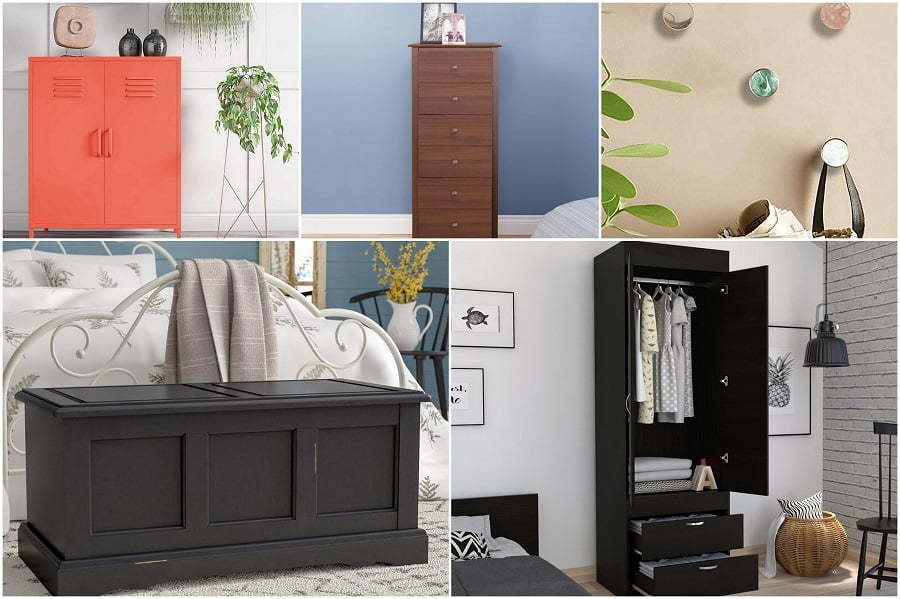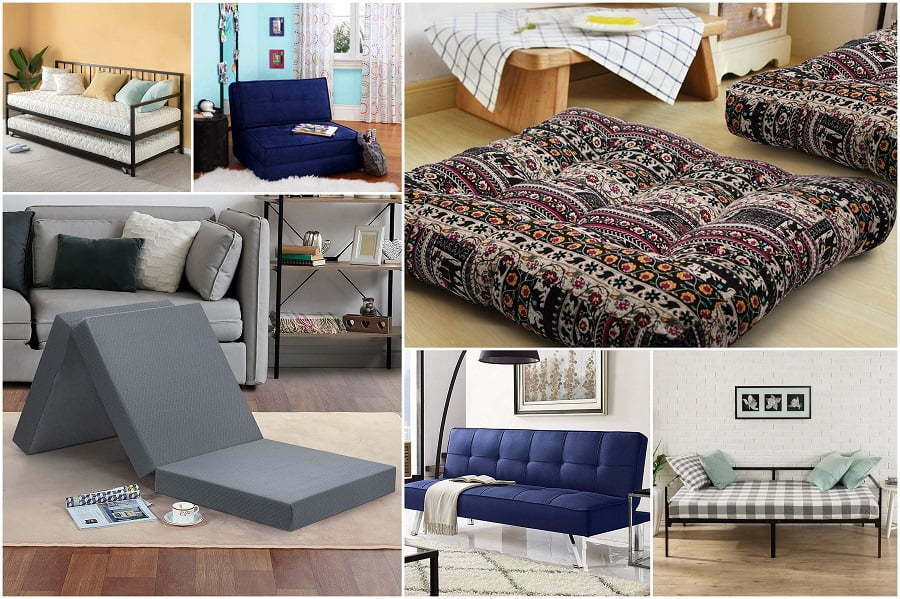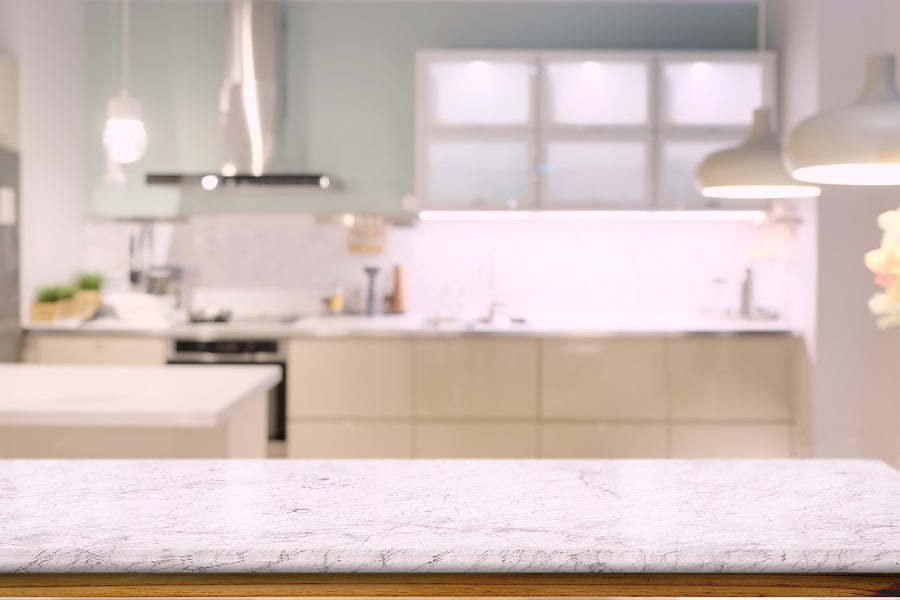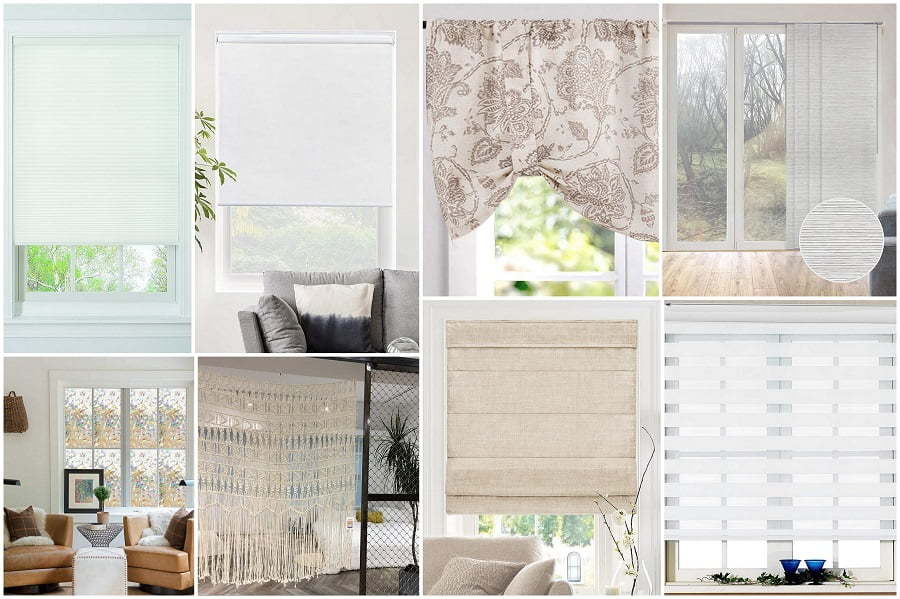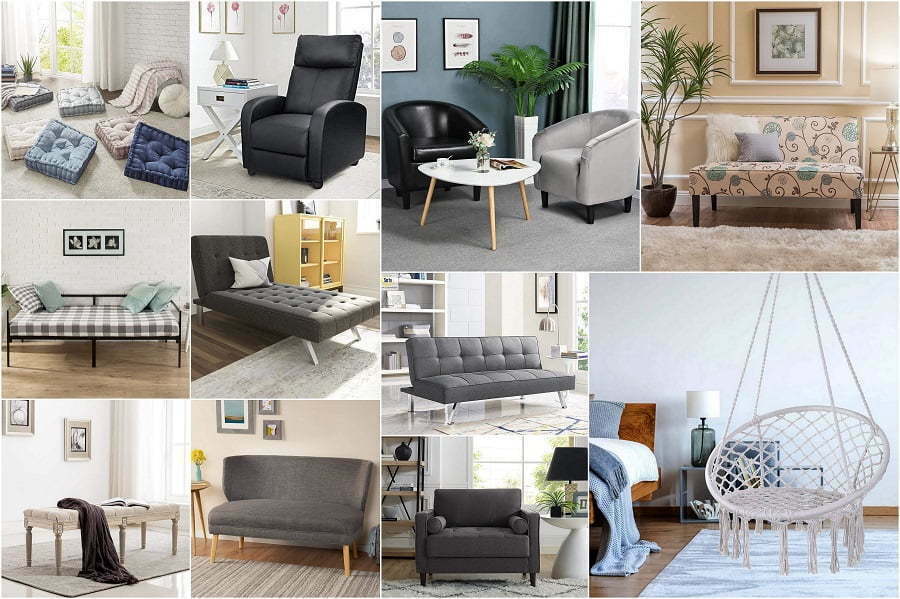Last updated on
Explore the world of stucco alternatives as we dive into various options that offer durability, style, and eco-friendliness for your home’s exterior.
Welcome to my latest blog post where we will be exploring some amazing stucco alternatives that can help you achieve a stunning look for your home without breaking the bank. Stucco has been a popular choice for exterior walls and even interior walls for many years, but it can be expensive and difficult to maintain.
That’s why I’ve scoured the internet and consulted with experts in the field to bring you some fantastic options that are just as beautiful, durable, and cost-effective. So whether you’re looking to update your home’s exterior or give your interior walls a fresh new look, keep reading to discover some exciting stucco alternatives that could work wonders for your space!
Understanding Stucco Alternatives
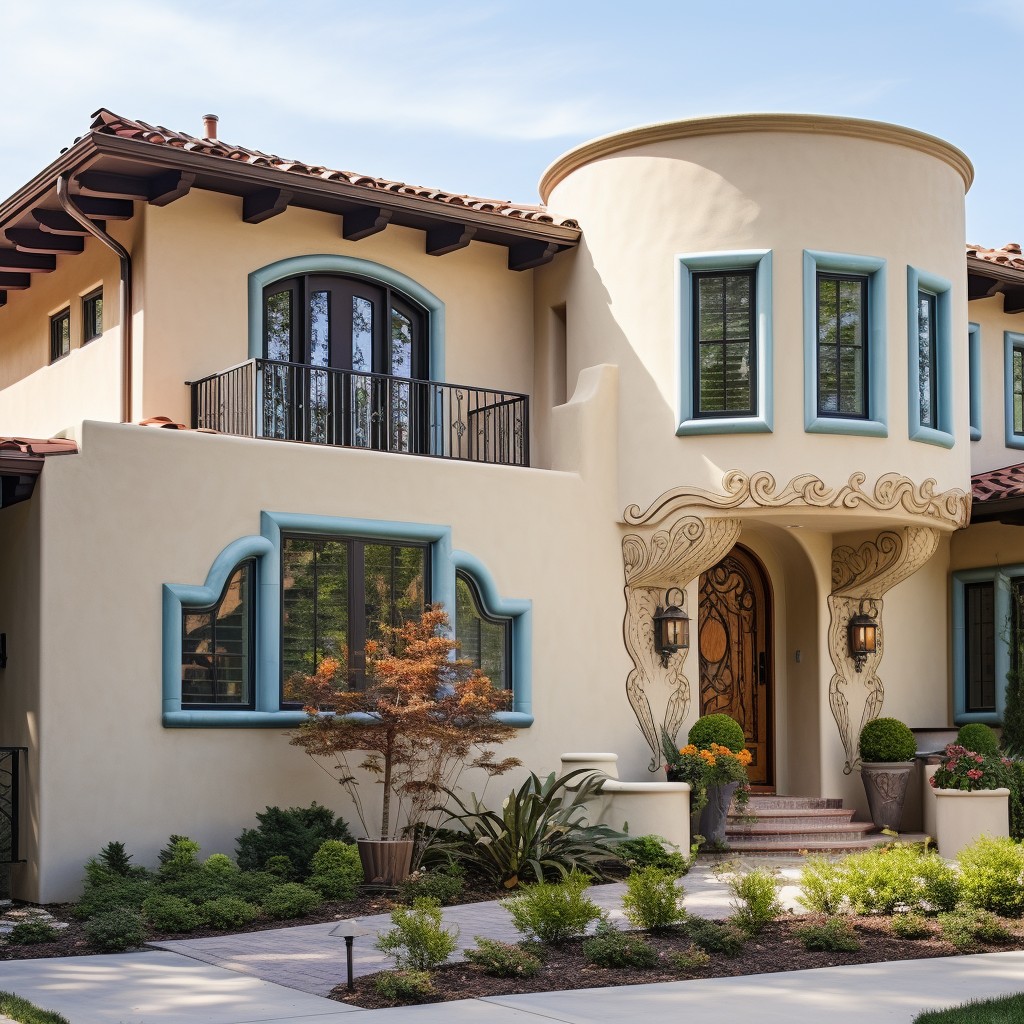
Before we dive into the various stucco alternatives, it’s important to understand what stucco is and why you might want to consider an alternative. Stucco is a popular exterior finish made of cement, sand, and water that creates a textured surface on walls.
While it can be durable and long-lasting when properly maintained, it can also be prone to cracking or fading over time.
That’s where stucco alternatives come in – they offer similar benefits as traditional stucco but with added advantages such as increased customization options or eco-friendliness. By exploring these options further, you’ll gain insight into which one may work best for your home based on factors like maintenance needs or cost-effectiveness.
Fiber Cement Siding
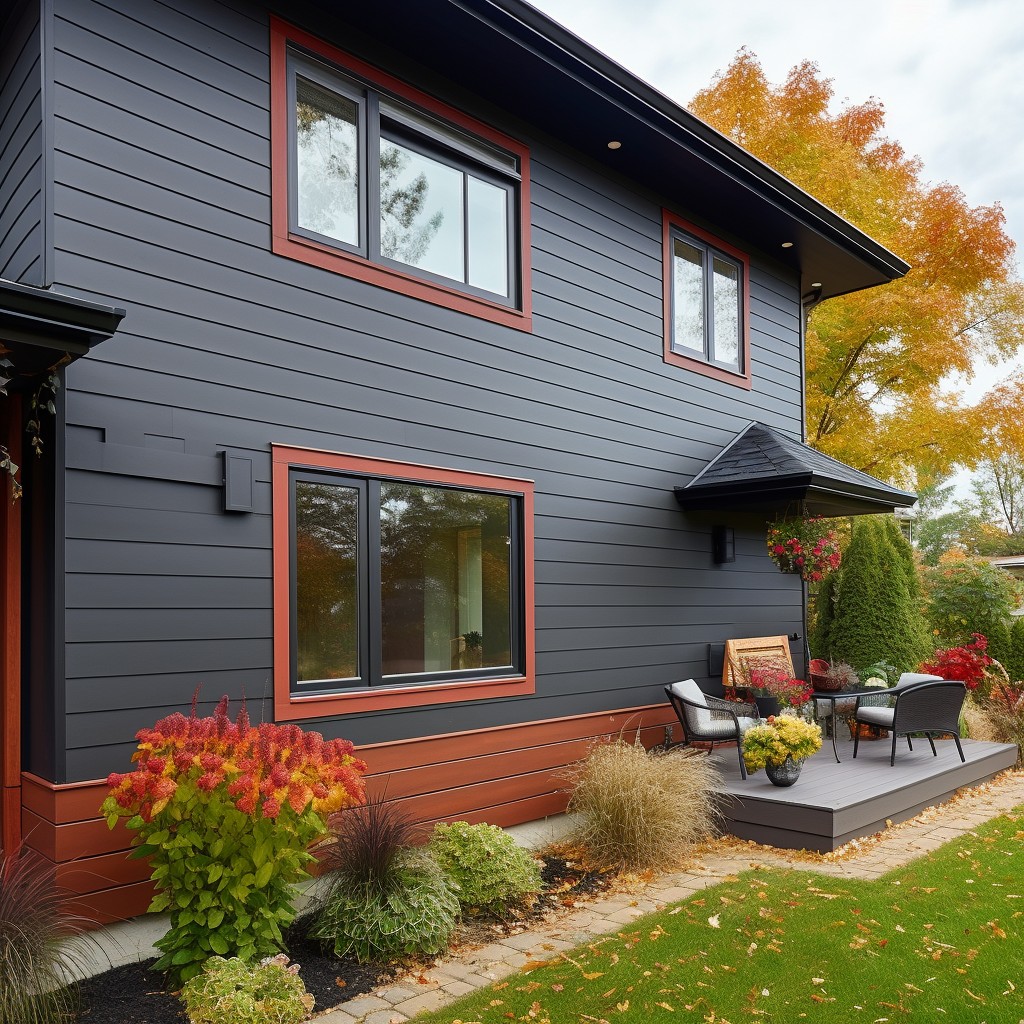
It’s made from a mixture of cement, sand, and cellulose fibers which makes it incredibly durable and resistant to fire, insects, and rot. This type of siding can also be designed to mimic the look of wood or other materials while still maintaining its strength.
One major advantage of fiber cement siding is its low maintenance requirements compared to traditional stucco. It doesn’t require painting as often as wood or vinyl siding does because it holds paint better due to its porous nature.
Another benefit is that fiber cement siding comes in various colors and textures so you can customize your home’s exterior according to your preferences without sacrificing durability or style.
However, one downside could be the installation process since this material requires special tools for cutting which may increase labor costs during installation.
Vinyl Siding
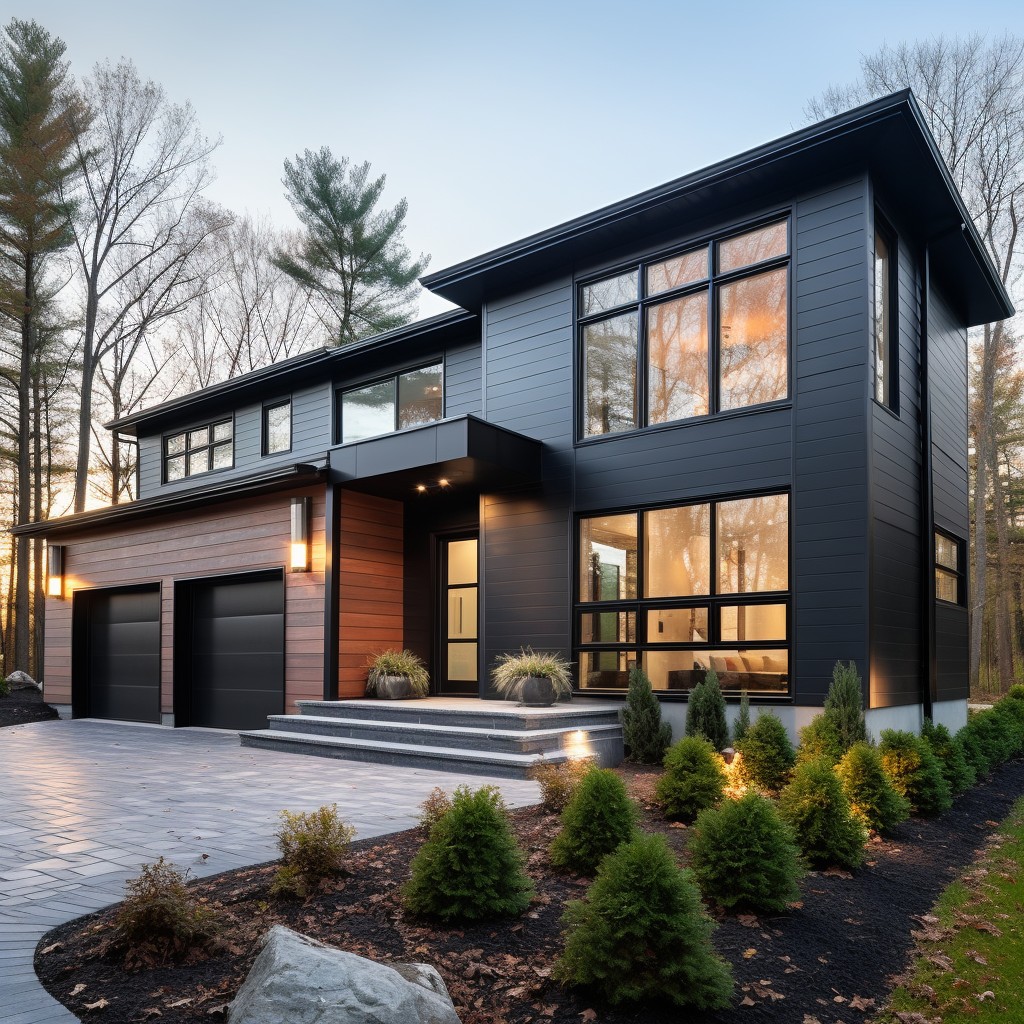
It’s a cost-effective option that offers durability, low maintenance, and versatility in terms of design. Vinyl siding comes in various colors and styles to match your home’s aesthetic appeal.
It is made from PVC (polyvinyl chloride) resin which makes it resistant to moisture damage, rotting or warping over time. This means you won’t have to worry about replacing it anytime soon.
Another advantage of vinyl siding is its energy efficiency properties as some brands come with insulation backing that can help reduce heating and cooling costs for your home.
However, one downside of this material is that it may not be suitable for areas with extreme weather conditions such as high winds or hailstorms where dents could occur on the surface easily.
Metal Siding
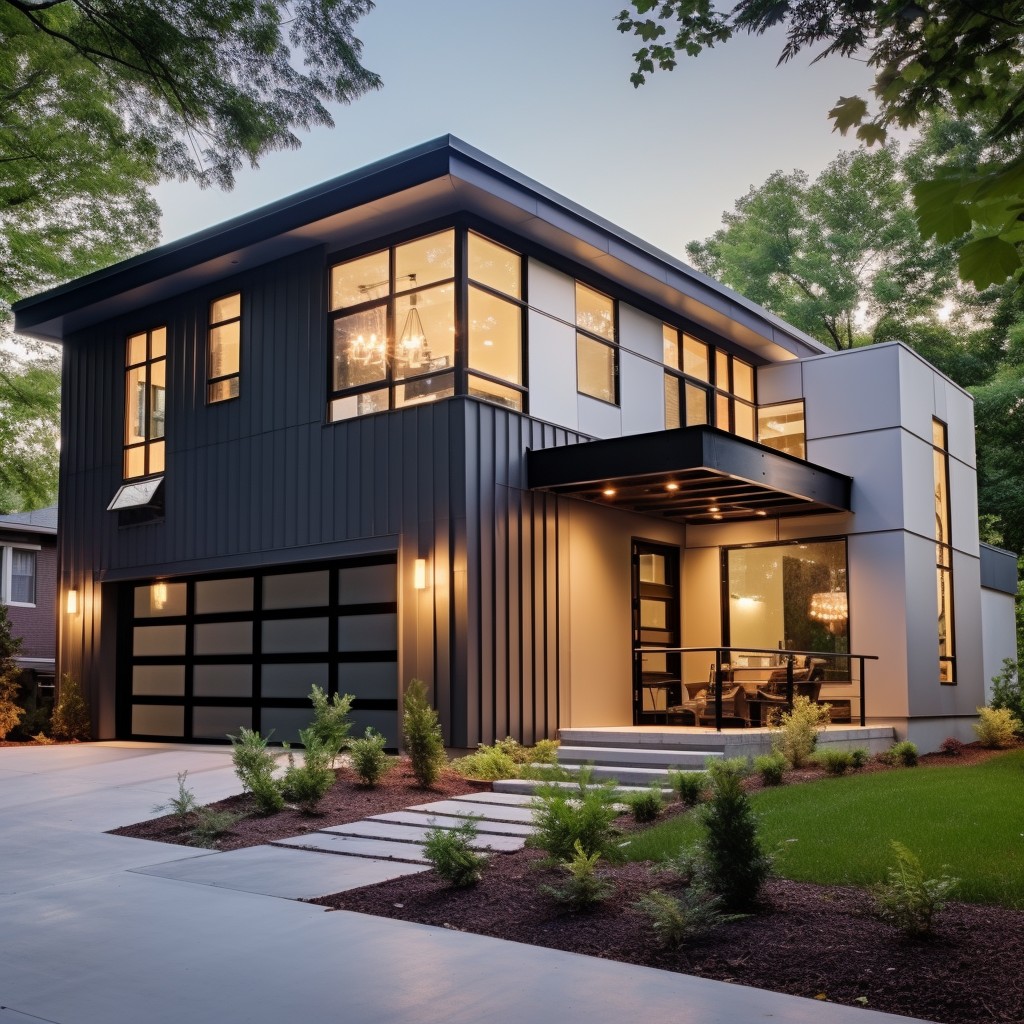
It’s available in various materials such as aluminum, steel, copper or zinc. Metal siding can be installed vertically or horizontally to create different looks for your home’s exterior.
One of the most significant advantages of metal siding is its longevity; it can last up to 50 years with proper care and maintenance. Metal sidings are resistant to fire damage and pests like termites which makes them an excellent choice for homeowners who live in areas prone to wildfires.
Another benefit of using metal sidings is their energy efficiency properties; they reflect sunlight away from the house during hot summer months reducing cooling costs while retaining heat inside during winter months lowering heating bills.
Lastly but not least important factor when considering any type of home renovation project – cost-effectiveness! Metal sidings are relatively affordable compared with other stucco alternatives such as stone veneer or brick veneer making them an ideal option if you’re on a tight budget but still want quality results that will stand the test of time.
Brick Veneer
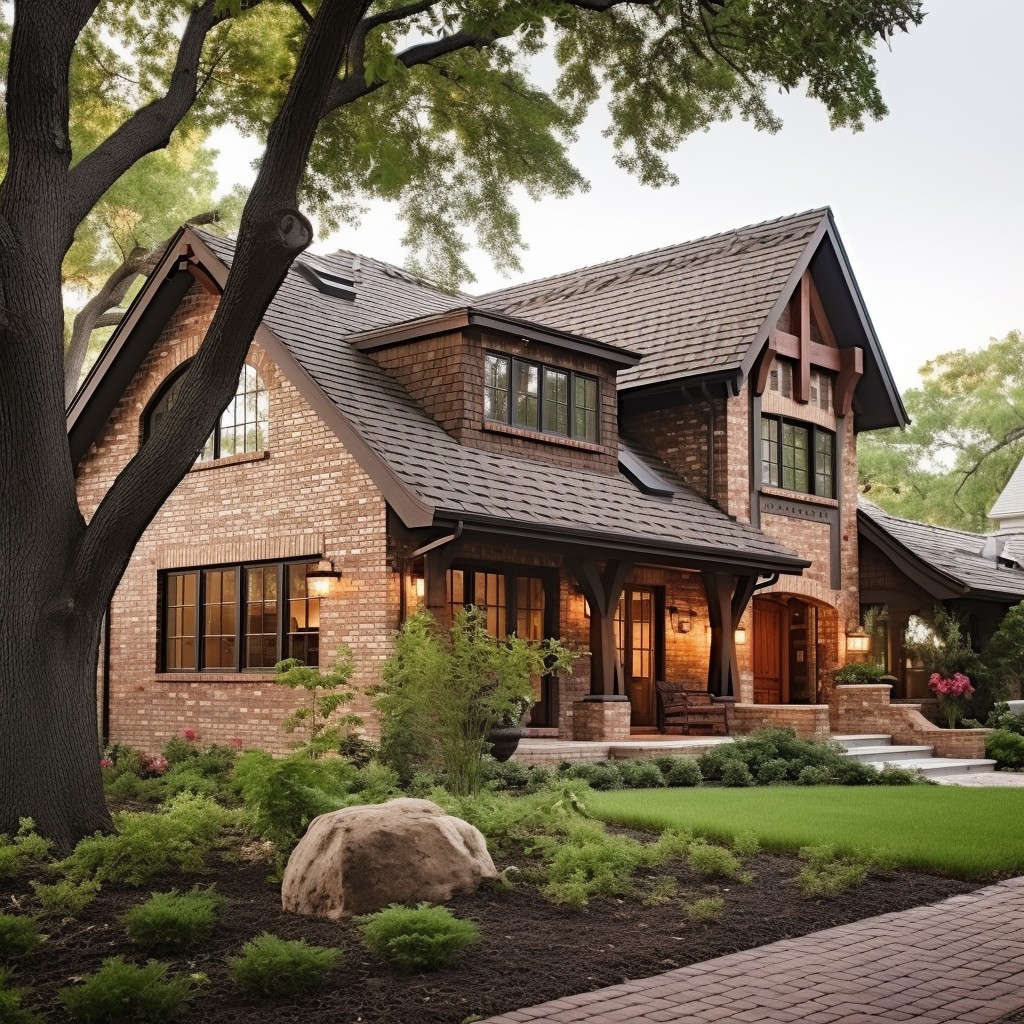
Brick veneers are thin slices of real bricks that can be installed over your home’s exterior walls or interior walls to create a classic look without the weight and expense of traditional brick construction.
One significant advantage of using brick veneers is their low maintenance requirements. They don’t require painting or sealing, which means they’ll save you time and money in the long run.
They offer excellent insulation properties that can help reduce energy costs by keeping your home warm during winter months.
Another benefit of using brick veneers as a stucco alternative is their versatility when it comes to design options. You can choose from various colors, textures, sizes, shapes to achieve any desired look for your space.
However, it’s essential to note that installing brick veneer requires professional expertise due to its weighty nature compared with other siding materials like vinyl or fiber cement siding. Therefore hiring an experienced contractor will ensure proper installation techniques are used while maintaining safety standards throughout the process.
Wood Siding

It’s been used for centuries and can give your home a warm, natural feel that other materials just can’t match. Wood siding comes in many different styles such as clapboard, shingles or shakes which offer unique textures to the exterior of your home.
One of the biggest advantages of wood siding is its versatility when it comes to customization options. You can paint or stain it any color you like to match your personal style preferences perfectly.
However, there are some downsides to consider before choosing this material over others. Wood requires regular maintenance such as painting or staining every few years because it’s susceptible to rotting and insect damage if not properly cared for.
While wood may be cost-effective initially compared with stucco alternatives like stone veneer or fiber cement siding; however long-term costs could add up due to maintenance expenses over time.
Composite Siding
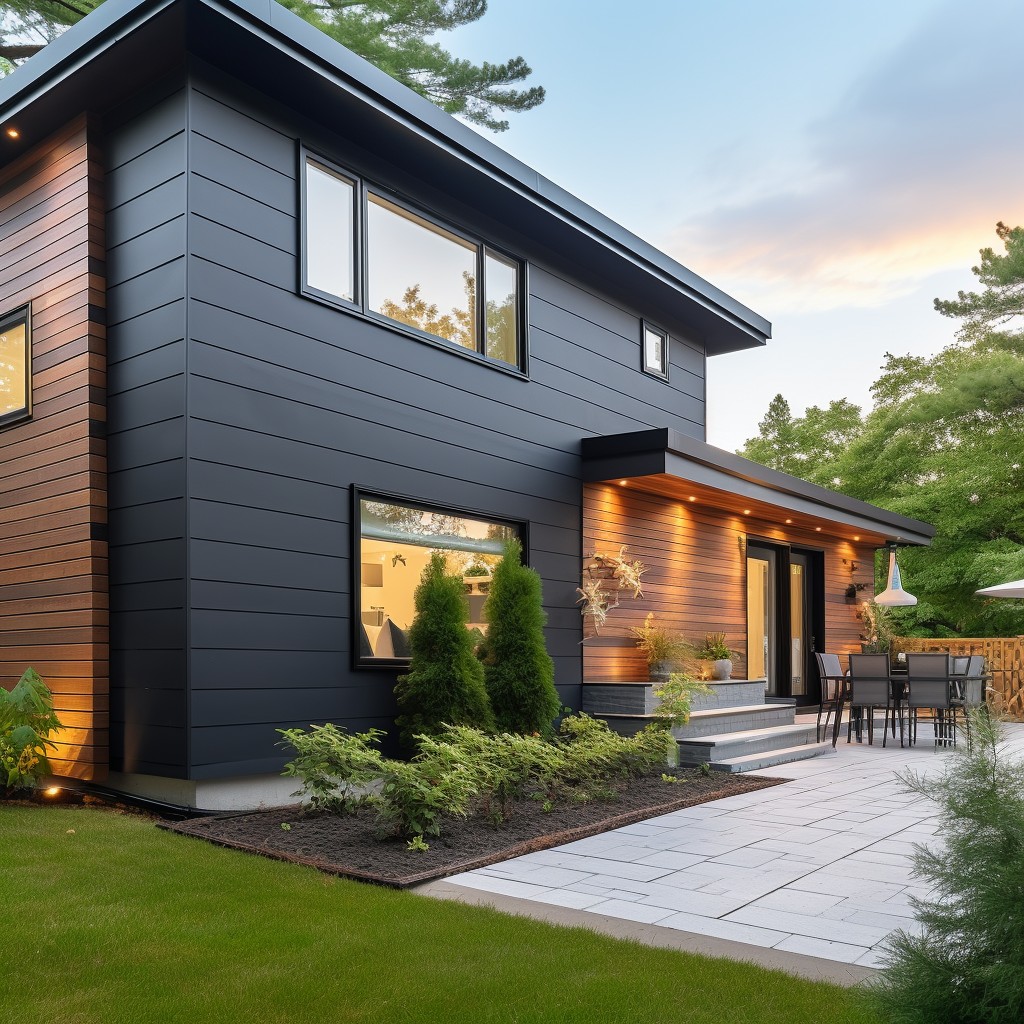
Made from a combination of wood fibers and plastic resins, composite siding is designed to mimic the texture and appearance of natural wood while providing superior durability against harsh weather conditions. It’s also resistant to rotting, warping or cracking which makes it an excellent choice for homeowners who want low-maintenance exteriors.
One great thing about composite siding is its versatility in design options. You can choose from various colors and textures that will complement your home’s style perfectly.
Composite sidings are available in different profiles such as lap, shingle or vertical panels so you can achieve any desired look.
Another advantage of using this type of material is its eco-friendliness since most manufacturers use recycled materials during production making it an environmentally responsible option.
In terms of cost-effectiveness, although initially more expensive than vinyl or aluminum sidings; over time they prove to be more economical due to their long-lasting nature with minimal upkeep required.
Stone Veneer
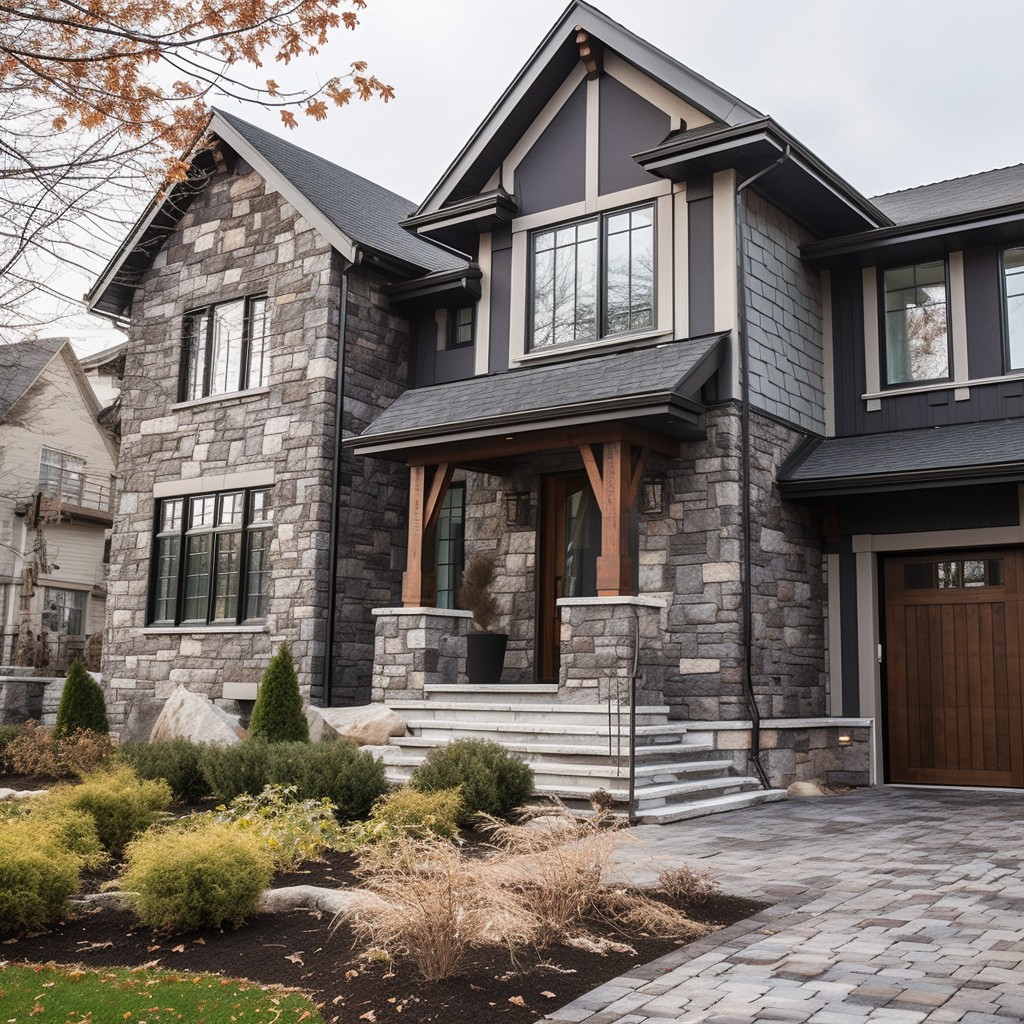
It is made from thin slices of natural or manufactured stone, which are then adhered to the wall using mortar or other adhesives. Stone veneer comes in various shapes, sizes, and colors to suit different architectural styles.
One of the main advantages of stone veneer over traditional stucco is its durability. It can withstand harsh weather conditions such as heavy rain, snowfall, and extreme temperatures without cracking or fading.
It requires minimal maintenance compared to stucco since it doesn’t need painting or sealing.
Another benefit of using stone veneer as a stucco alternative is its eco-friendliness. Natural stones are sourced sustainably from quarries while manufactured stones use recycled materials like concrete waste products that would otherwise end up in landfills.
However, one downside to consider when choosing this option for your home’s exterior walls is cost; installing natural stone may be more expensive than some other alternatives on our list due to material costs and installation time required by professionals with specialized skills.
Engineered Wood Siding
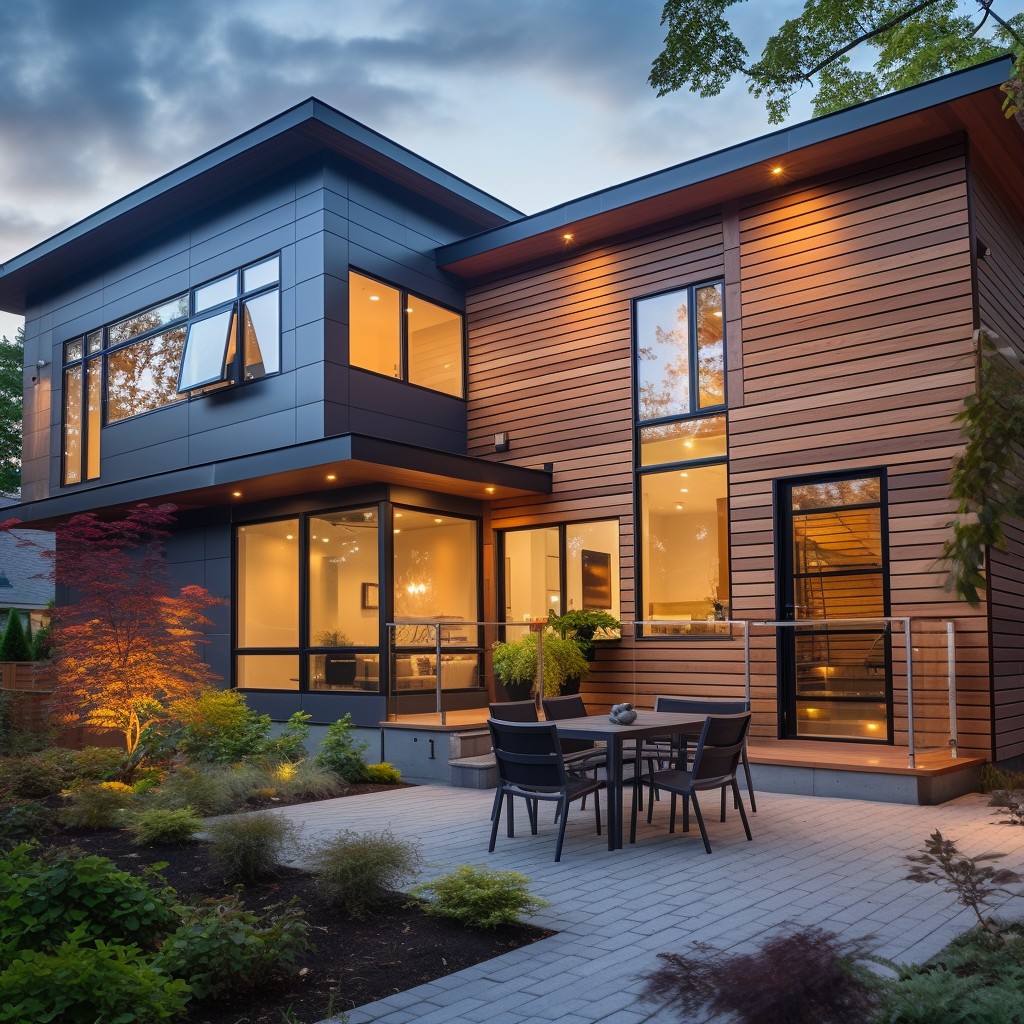
This type of siding is made from composite materials such as sawdust, resin, and wax that are compressed to create a durable material with the appearance of real wood.
One significant advantage of engineered wood siding is its resistance to rotting or warping due to moisture exposure. It’s also highly customizable in terms of color and texture options, allowing homeowners to achieve their desired aesthetic while still enjoying low-maintenance benefits.
Another benefit is its eco-friendliness since it’s often made from recycled materials. Engineered wood siding can last up to 30 years with proper care making it an excellent investment for any homeowner who wants long-lasting beauty on their home exterior walls.
Cedar Shake Siding
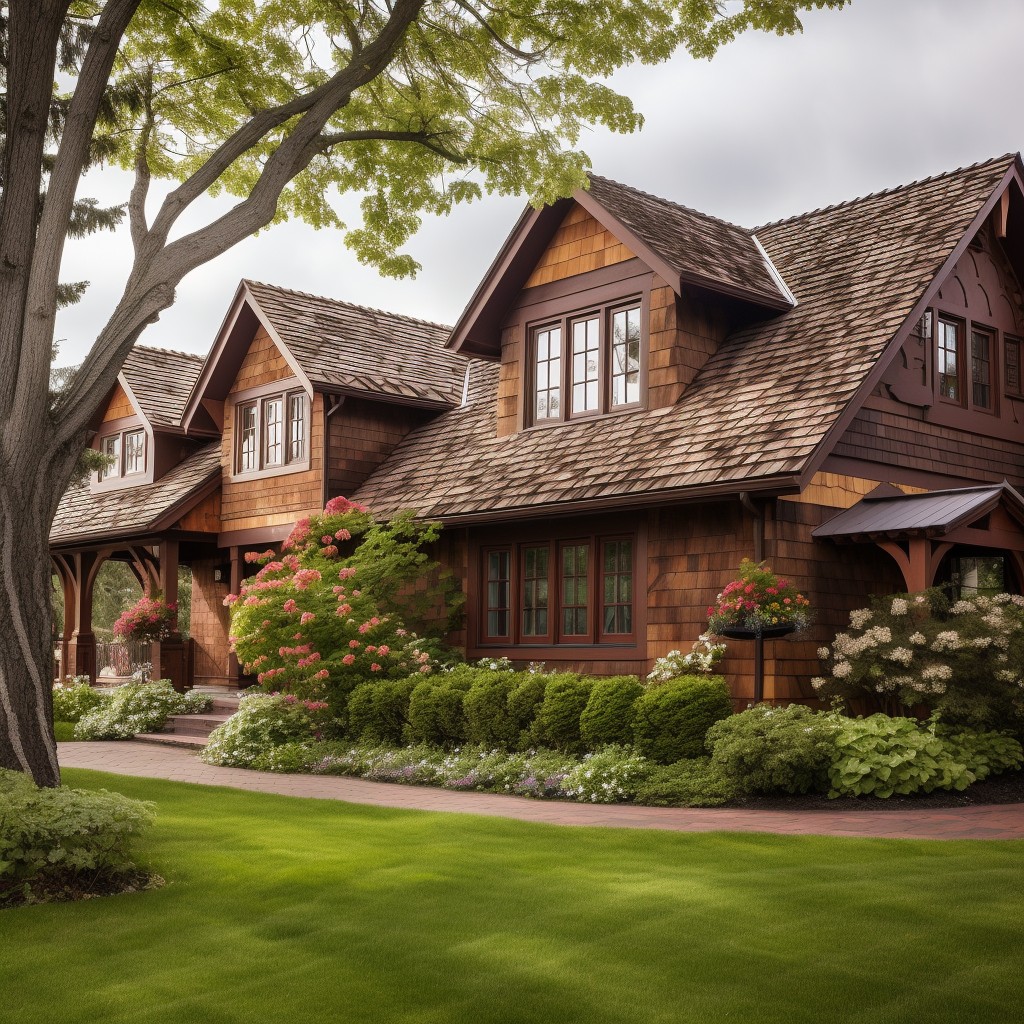
It’s made from natural cedar wood, which gives it a unique and rustic look that can add character to any home. Cedar shake siding is also known for its durability and resistance to insects, rotting, and decay.
One of the benefits of using cedar shake siding as an alternative to stucco is its ability to withstand harsh weather conditions such as heavy rain or snowfall. This makes it ideal for homes located in areas with extreme weather patterns.
Another advantage of using cedar shake siding over traditional stucco is the increased customization options available. Cedar shakes come in various sizes, shapes, colors, textures allowing homeowners more flexibility when designing their exterior walls.
Natural Stone Siding
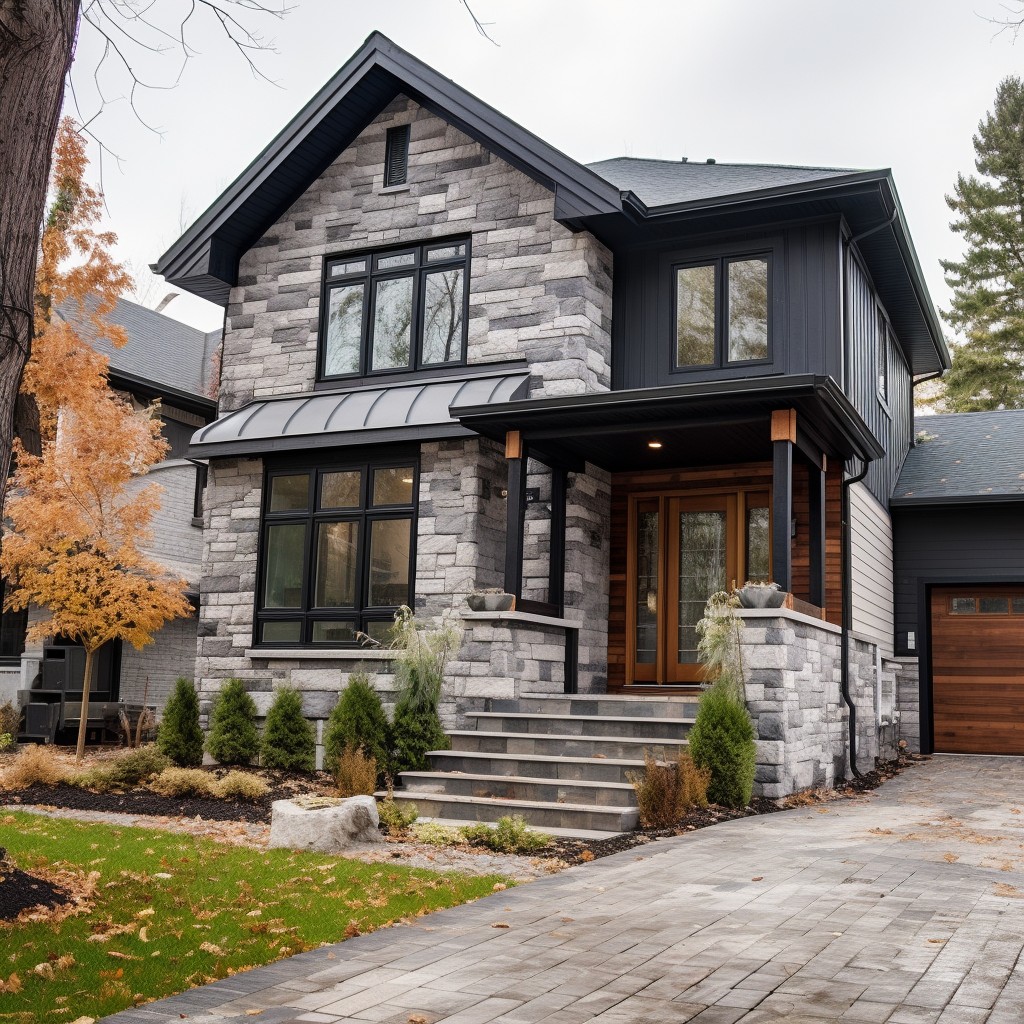
It offers a timeless look that can withstand the test of time, making it an excellent investment for homeowners who want something long-lasting.
One of the most significant benefits of natural stone siding is its durability. Unlike other materials that may crack or fade over time, natural stone can last for decades with proper maintenance.
It requires very little upkeep beyond occasional cleaning.
Another advantage of natural stone siding is its versatility in terms of design options. With various colors and textures available, you can create a unique look that complements your home’s style perfectly.
However, there are some downsides to consider when choosing this material as your stucco alternative. Natural stone siding tends to be more expensive than other options on the market due to its high-quality nature and installation costs associated with working with heavy stones.
Aluminum Siding

This type of siding is made from lightweight yet sturdy aluminum panels that are designed to withstand harsh weather conditions such as heavy rain, snow, and wind.
One of the biggest advantages of using aluminum siding is its longevity. Unlike traditional stucco that can crack or chip over time due to exposure to moisture or extreme temperatures, aluminum siding holds up well against wear and tear.
It’s also resistant to rusting and fading which means it will maintain its appearance for years without requiring much upkeep.
Another benefit of choosing this material is its versatility in terms of design options. Aluminum panels come in a variety of colors so you can easily find one that matches your home’s aesthetic style perfectly.
Shingle Siding
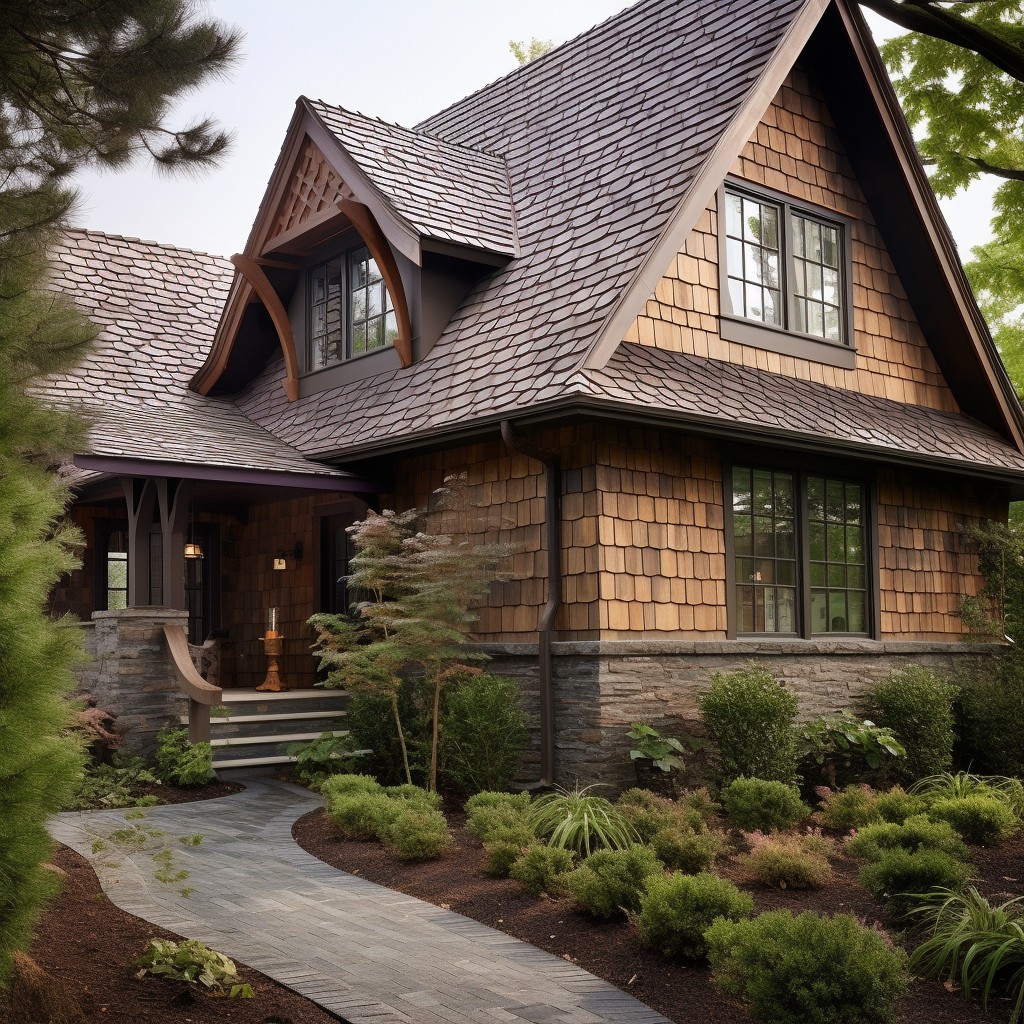
Shingles are made from various materials such as wood, vinyl or fiber cement and come in different shapes like rectangular or hexagonal. They can be installed vertically or horizontally to create a unique pattern that adds depth to your exterior walls.
One of the benefits of shingle siding is its durability; it can withstand harsh weather conditions without cracking, warping, rotting or fading over time. It’s also low maintenance since it doesn’t require painting every few years like traditional wooden clapboards.
Another advantage is that shingles offer increased customization options compared to stucco; they come in various colors and textures allowing homeowners to choose what best suits their style preferences.
Lastly, installation time with shingle siding is relatively quick compared to other alternatives such as stone veneer which requires more labor-intensive work. This makes it an affordable option for those on a budget who still want quality results.
OSB (Oriented Strand Board) Siding
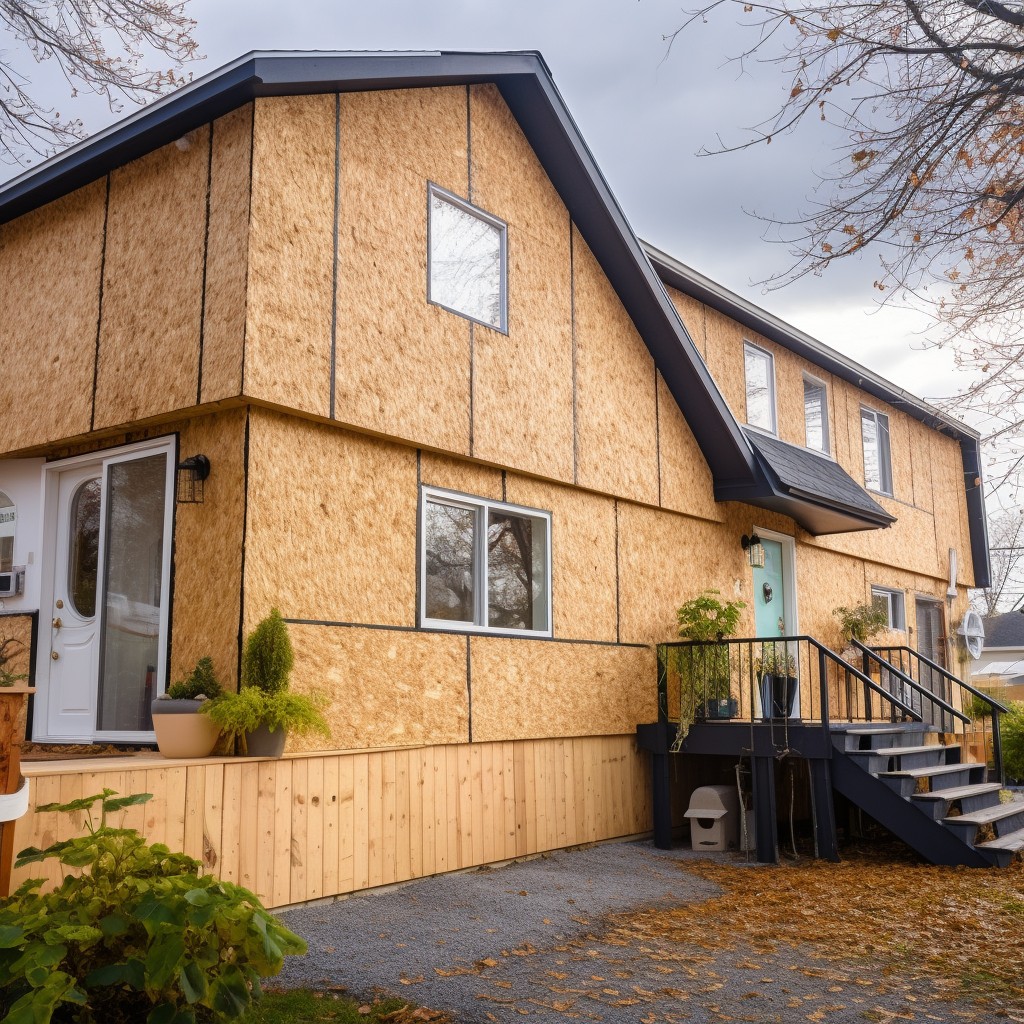
Made from compressed wood strands, OSB siding offers excellent durability and resistance to moisture, making it an ideal choice for homes located in areas with high humidity or frequent rainfall.
One of the biggest advantages of using OSB siding is its cost-effectiveness. Compared to traditional stucco, which can be quite expensive due to the labor-intensive installation process and materials required, OSB siding can be installed quickly and easily by a professional contractor at a fraction of the cost.
Another benefit of using OSB siding as an alternative to stucco is its versatility when it comes to customization options. With various finishes available such as smooth or textured surfaces that mimic natural wood grain patterns or stone textures; homeowners have more flexibility when choosing their desired look for their home’s exterior.
However, like any other material used on your home’s exterior walls; proper maintenance will ensure longevity. Regular cleaning with mild soap solution followed by rinsing off dirt buildup will keep your house looking great year-round while also preventing mold growth caused by excess moisture accumulation over time.
EIFS (Exterior Insulation and Finish Systems)
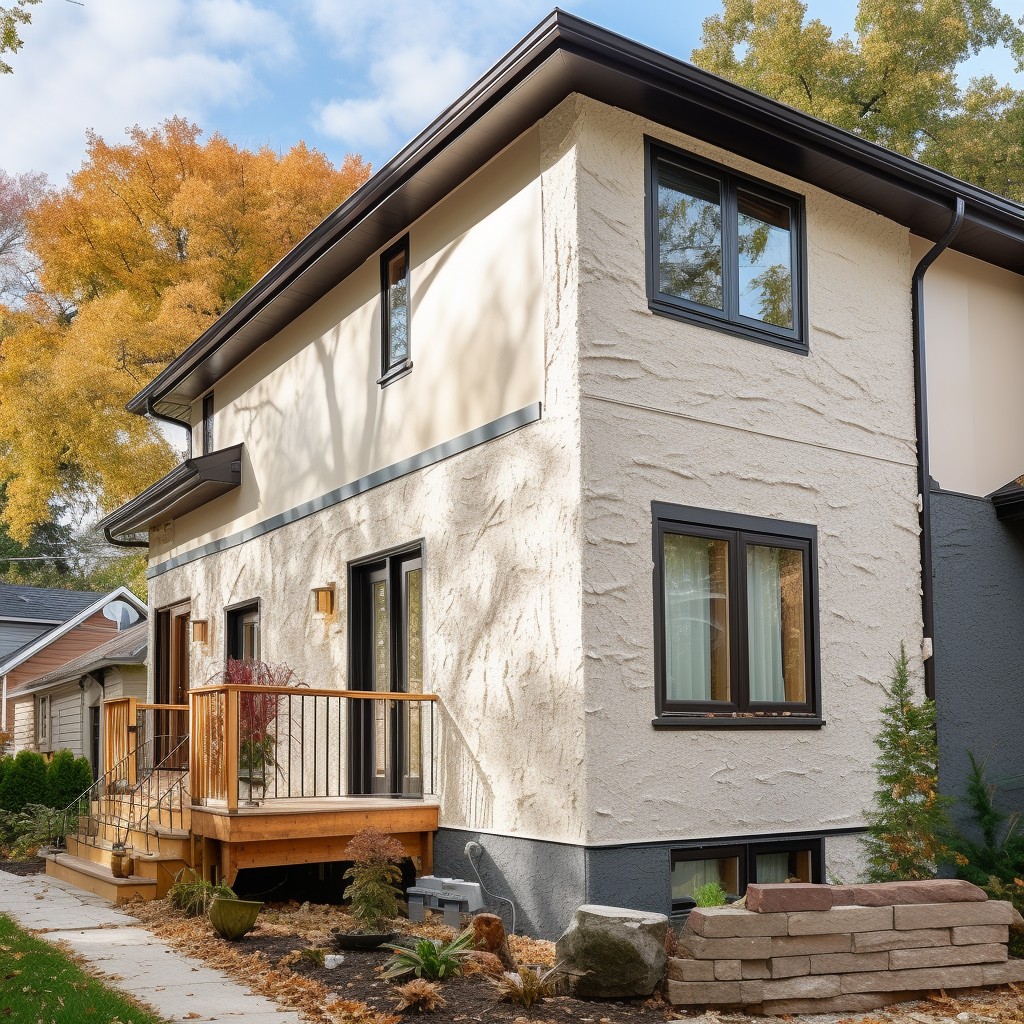
This system involves applying multiple layers of insulation board to the exterior walls, followed by a base coat and finish coat. The result is an energy-efficient, durable, and customizable exterior that can mimic the look of stucco or other materials.
One major advantage of EIFS over traditional stucco is its superior insulation properties. By adding extra layers of insulation to your home’s exterior walls, you can significantly reduce your heating and cooling costs while also improving indoor comfort levels.
Another benefit of EIFS is its versatility when it comes to design options. With a wide range of colors, textures, and finishes available for both the base coat and finish coat layers, you can achieve virtually any look you desire for your home’s exterior.
However, it’s important to note that proper installation by experienced professionals is crucial with this type of system as improper installation could lead to moisture damage or even mold growth within the wall cavity if water penetrates through cracks in the surface layer.
Bamboo Siding

Bamboo grows quickly and can be harvested without killing the plant, making it one of the most renewable resources on earth. It’s also incredibly strong and durable, with natural resistance to pests and rot.
Bamboo siding comes in various styles such as planks or panels that can be installed horizontally or vertically depending on your preference. The material is lightweight yet sturdy enough to withstand harsh weather conditions like windstorms or heavy rainfalls.
One thing to keep in mind when considering bamboo siding is that it requires regular maintenance just like any other type of wood-based product. You’ll need to seal it properly every few years so that moisture doesn’t penetrate into the fibers causing warping or cracking over time.
Comparing Stucco Alternatives

Each option has its own unique benefits and drawbacks, so it’s important to weigh them carefully before making a decision.
One of the main advantages of stucco alternatives is that they offer increased customization options. With traditional stucco, you’re limited in terms of color and texture choices.
However, many modern siding materials come in a wide range of colors and finishes that can be tailored to suit your specific design preferences.
Another factor worth considering is maintenance and durability. While traditional stucco can last for decades with proper care, some alternatives may require less upkeep over time or have longer lifespans overall.
Cost-effective installation time should also be taken into account when comparing different types of siding materials against each other as this could impact both budgeting considerations as well as project timelines.
Maintenance and Durability
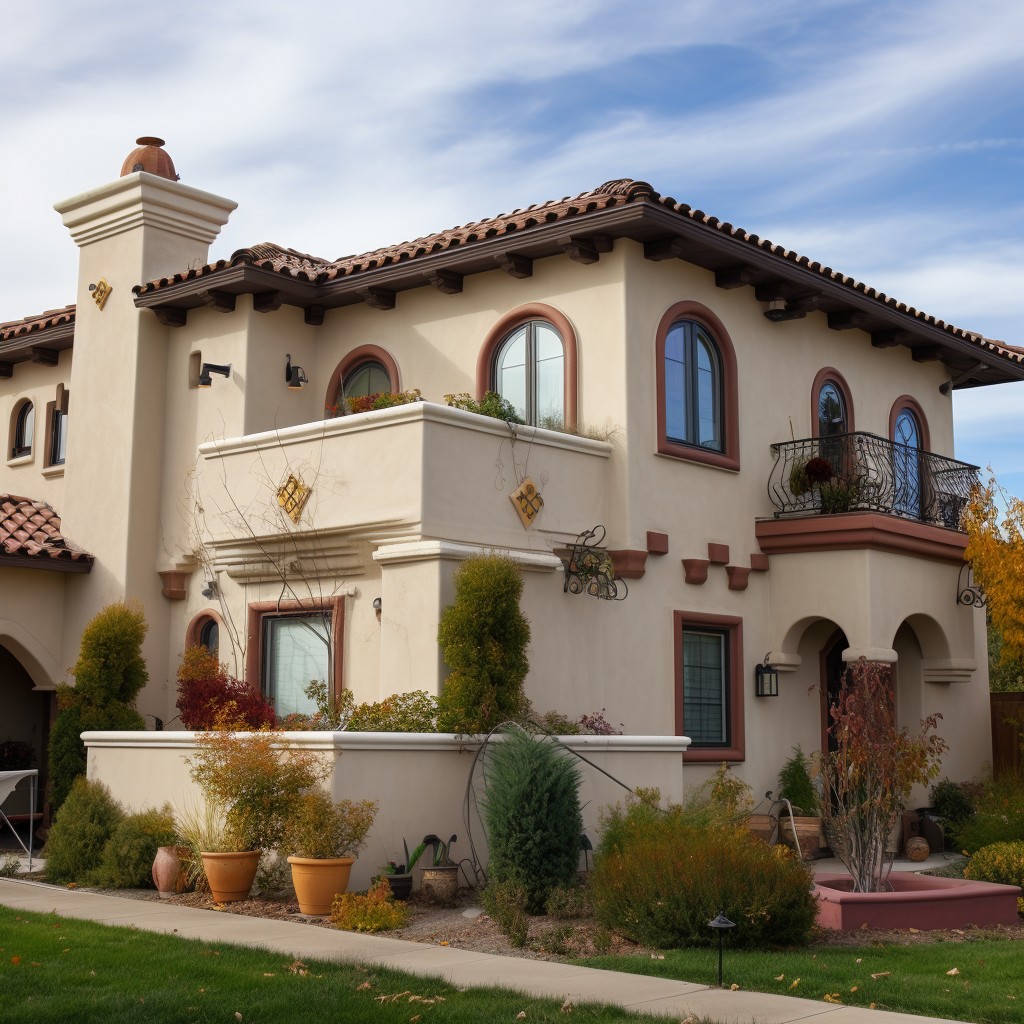
While traditional stucco can crack, chip, or fade over time, many modern siding options are designed to withstand harsh weather conditions without losing their color or texture.
For example, fiber cement siding is a popular choice for its resistance to rotting, warping and cracking. It’s also fire-resistant which makes it an excellent option for homes in areas prone to wildfires.
Vinyl siding is another durable alternative that requires minimal upkeep. It doesn’t need painting or staining like wood sidings do; all you need is a simple cleaning with soap and water every once in a while.
Metal sidings such as aluminum offer superior protection against moisture damage caused by rainwater infiltration into your home’s walls. They’re also resistant to pests like termites that can cause significant structural damage if left unchecked.
Increased Customization Options
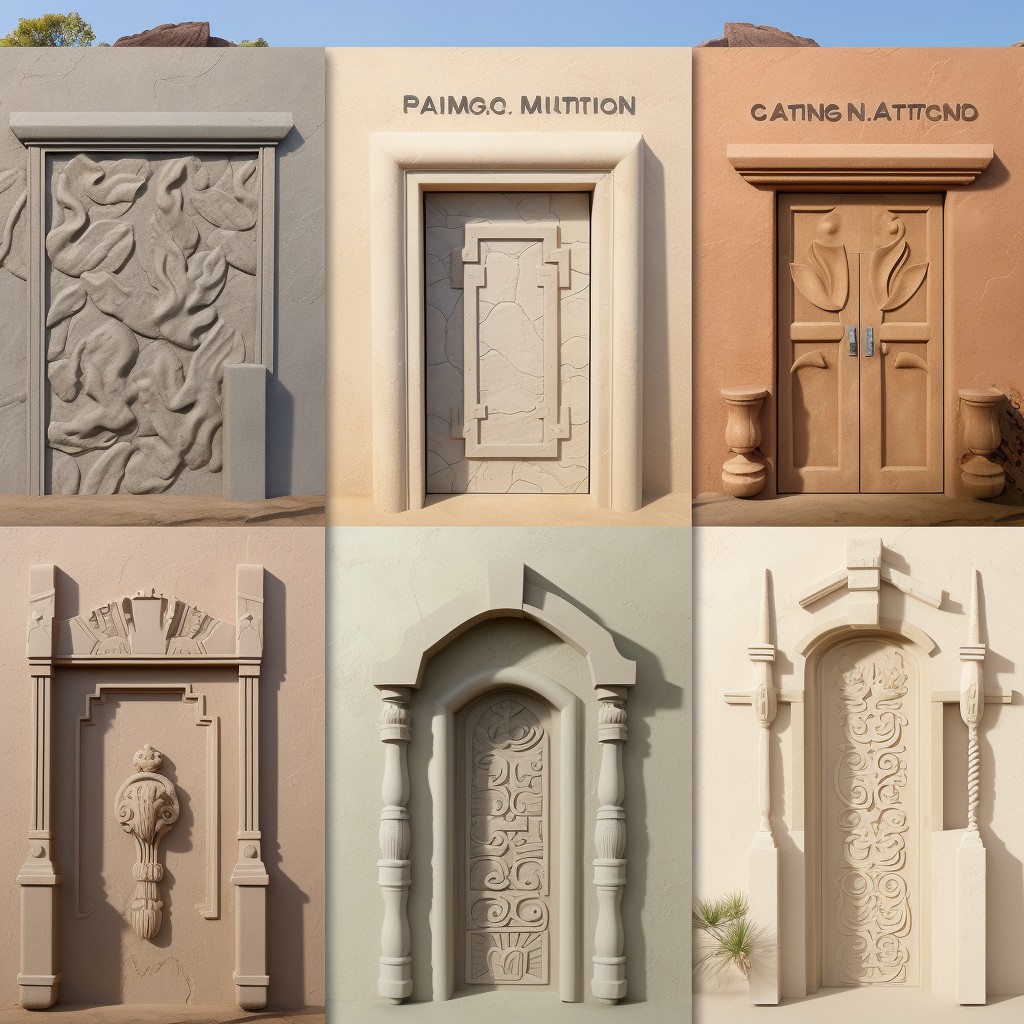
While traditional stucco can be difficult to work with and limit your design choices, many alternative materials come in a wide range of colors, textures, and finishes that allow you to create a unique look for your home.
For example, fiber cement siding comes in various styles such as lap siding or shingle-style panels that mimic wood grain patterns. Vinyl siding offers an extensive selection of colors and profiles like scallops or shakes.
Stone veneer provides natural texture variations while engineered wood sidings are available in different shapes like half-rounds or octagons.
With so many options at hand when it comes to choosing stucco alternatives for your home’s exterior walls or interior walls; you can let your creativity run wild! You could mix-and-match different materials on one wall surface creating an eye-catching focal point for visitors passing by. Or use contrasting shades from light-to-dark tones within one material type giving depth perception visually appealing effect.
Cost-Effective Installation Time
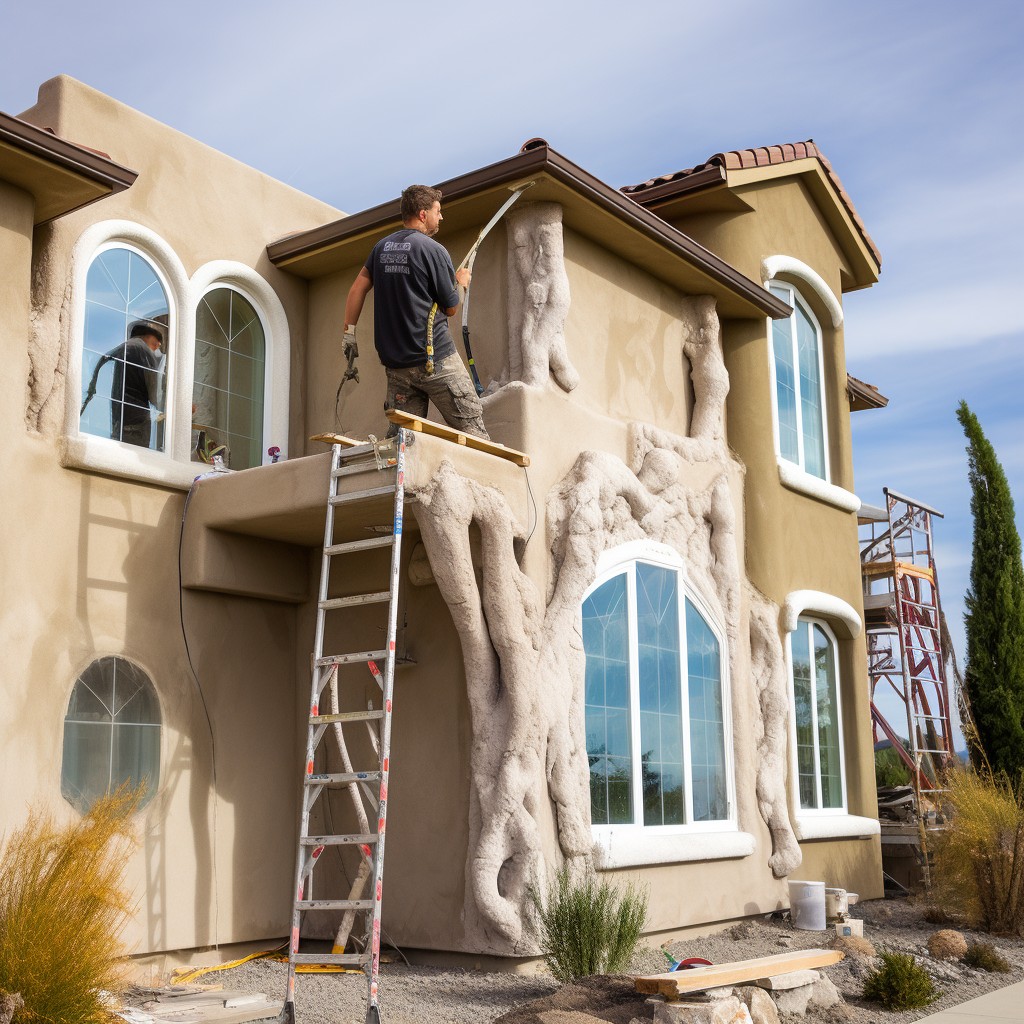
Traditional stucco can take weeks to install, and it requires a lot of preparation work before application. This means that you’ll have to spend more money on labor costs, which can quickly add up.
On the other hand, many stucco alternatives are designed for quick and easy installation. For example, fiber cement siding comes in large panels that can be installed relatively quickly by professionals or even DIY enthusiasts with some experience.
Similarly, vinyl siding is also known for its ease of installation as it comes in pre-cut lengths that snap together easily without requiring any special tools or skills.
By choosing one of these alternative options over traditional stucco materials like plaster or concrete-based products such as EIFS (Exterior Insulation and Finish Systems), you could save yourself both time and money while still achieving a beautiful finish for your home’s exterior walls.
Environmental Considerations
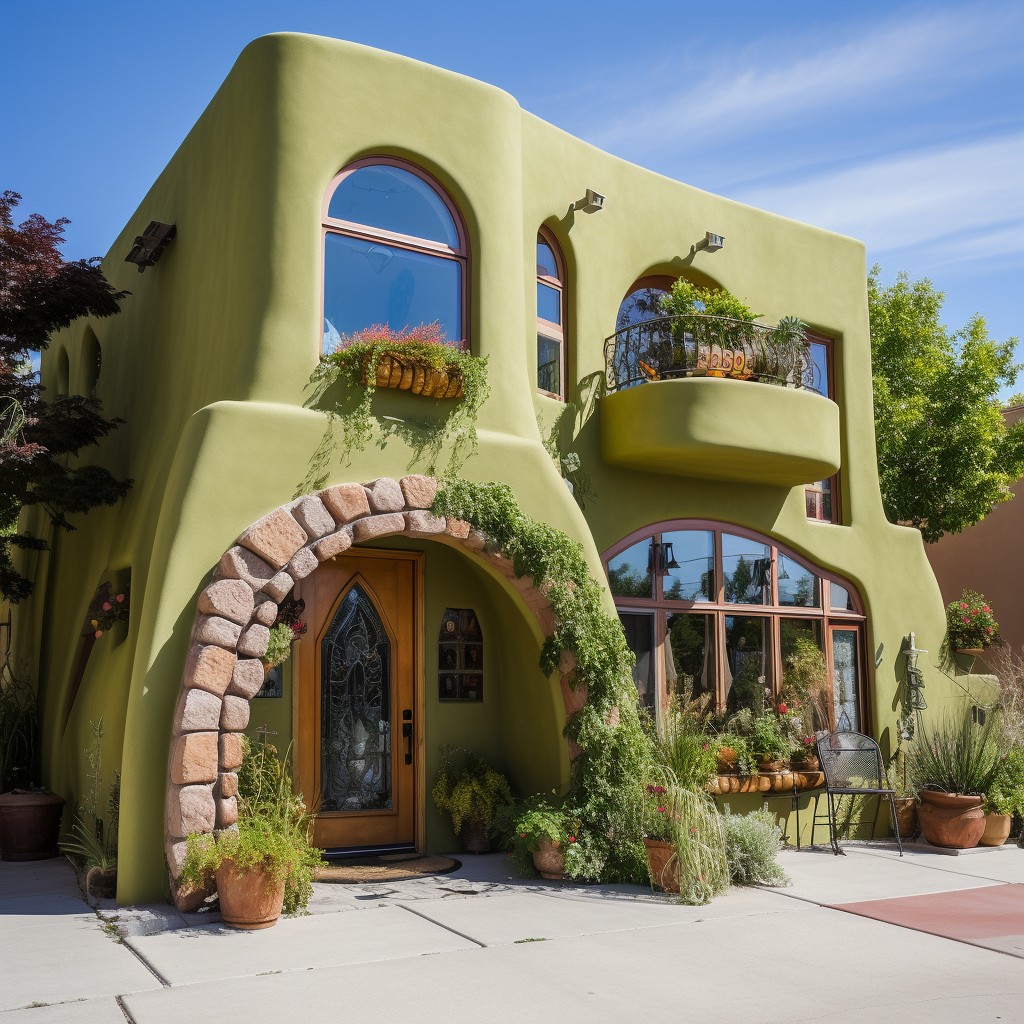
When it comes to stucco alternatives, there are several environmentally conscious choices available. For instance, fiber cement siding is made from sustainable materials like wood pulp and cement which makes it an excellent choice for those who want to minimize their impact on the environment.
Another option is engineered wood siding which uses recycled materials such as sawdust and chips of wood fibers mixed with resin binders. This type of siding not only looks great but also helps in reducing waste by utilizing scrap material that would otherwise end up in landfills.
Stone veneer is another popular alternative that offers both durability and sustainability since natural stone requires minimal processing compared to other building materials like brick or concrete blocks.
When choosing a stucco alternative for your home’s exterior or interior walls, consider opting for eco-friendly options that offer long-lasting beauty while minimizing environmental impact.
FAQ
What material is better than stucco?
Fiber cement siding is better than stucco due to its extreme durability, weather-resistance, and resistance to rot and cracking.
What is the fake stucco called?
The fake stucco is commonly called Exterior Insulating and Finish System (EIFS).
Is synthetic stucco better than stucco?
Traditional stucco is generally better than synthetic stucco due to its greater durability, fire resistance, and longevity.
Is EIFS better than stucco?
EIFS is considered better than stucco due to its increased insulation, flexibility, and durability against weather-related impacts.
What are the main differences between traditional stucco and alternative siding materials?
Traditional stucco differs from alternative siding materials primarily in composition, texture, and installation method, while alternative materials offer a wider variety of styles, colors, and lower maintenance requirements.
What are the pros and cons of using fiber cement siding as a stucco alternative?
Fiber cement siding, as a stucco alternative, offers pros such as low maintenance, durability, and resistance to fire, rot, and pests, while having cons like higher costs and possible moisture issues if not installed properly.
How does the cost and maintenance of vinyl siding compare to traditional stucco?
Vinyl siding is generally cheaper and easier to maintain than traditional stucco.
Recap

